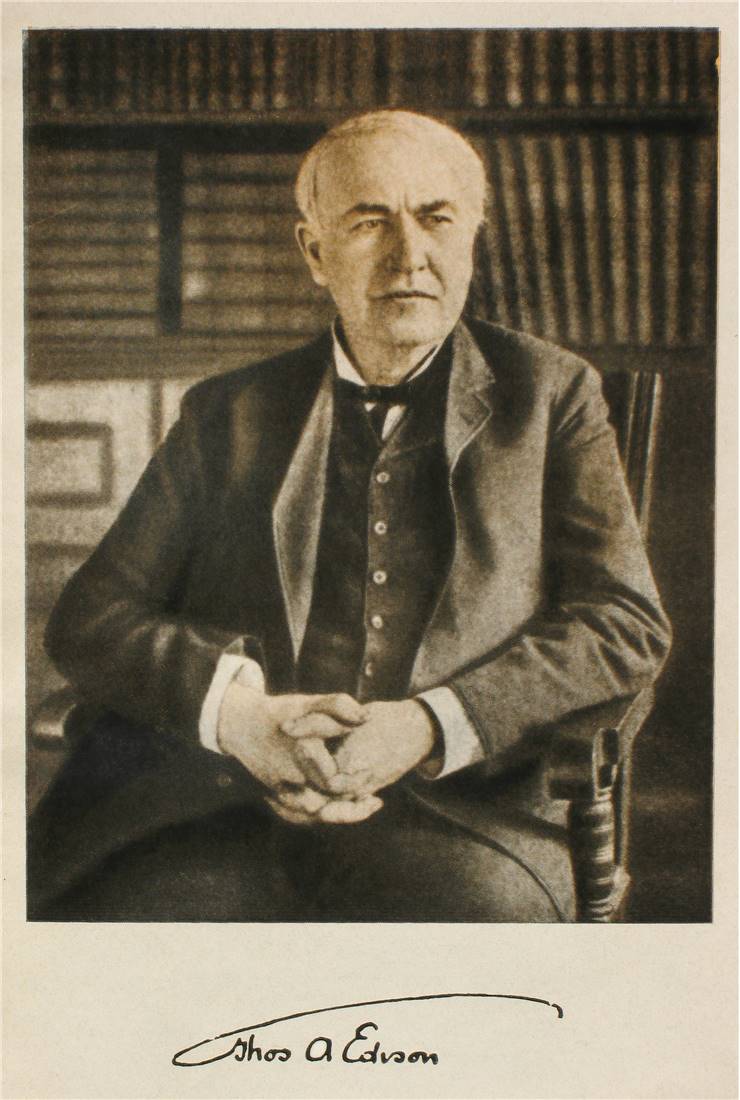Thomas Alva Edison
Even though first sound recording device came from the mind of French book keeper and inventor Édouard-Léon Scott de Martinville, the true revolution of sound recording and playing came from the exploits of the famous American inventor Thomas Alva Edison. During his life (1847 - 1931) he was responsible for the creation of many devices that improved lifestyle of entire humanity, and was one of the first inventors who embraced principles of teamwork and mass production. With over 1000 patents and countless devices, his legacy remains mostly in the fields of electricity (wide scale power grids, light bulb, and power stations), communications (telephony, telegraph), batteries, magnetism, picture and off course sound. Among all those inventions, his sound recording device phonograph managed to completely change the way we consume music and recorded speech.
After making his fortune with telegraphy, Edison set his sights on manufacturing many other devices that could benefit mankind in many areas of life.
As telephony was in its early days, he wanted to create device that could reproduce previously recorded sound, with great sound quality, ease of use
and manufacture. His efforts finally paid off on February 19, 1878 when Edison received U.S. patent #200,521 for the phonograph that was made in his
laboratory in Menlo Park, New Jersey, USA. By using similar approach as Scott de Martinville, Edison used cone shaped speaking horn to gather sounds
and deliver them to the flexible diaphragm that was connected to the sharp stylus. These their design changed. While Scott used paper covered in soot
to create marks, Edison experimented with several storage mediums before electing to use cylinder coated in thing tinfoil. This enabled stylus to
create indentations in its structure that can be read back by another stylus and delivered to diaphragm for reproduction.
Invention of phonograph
created sensation in scientific community and ordinary people, making Edison internationally known and respected. In the same year he received patent
for tinfoil cylinder recording and reproducing of sound, he formed Edison Speaking Phonograph Company with a goal to produce and sell
his phonographs. In the initial marketing, he described this machine as a perfect alternative for writing letters, dictation, educational tool, family
records, music boxes, audio books for blind people, scientific tool for preserving languages by recording precise pronunciations, and a clock that
announces time with human voice. Those initial models also had an ability to connect to the telephone networks, becoming somewhat automatic answering
machines and recorders.

Soon after, Edison moved on to the other projects and his phonograph fell out of public attentions. To fill this void, other inventors (most notably Alexander Bell) tackled the problems of original phonograph (mostly fragile tinfoil cylinders, which were upgraded to wax cylinders) and developed more advanced technologies for recording and reproducing sound. After several years Edison returned to the sound scene by improving his phonograph design and widening its presence in the public, but in that time other wax based technologies gained advantage that was unreachable, especially after 1894 when United States inventor Emile Berliner created flat shaped disc for his own sound reproducing device - gramophone.

